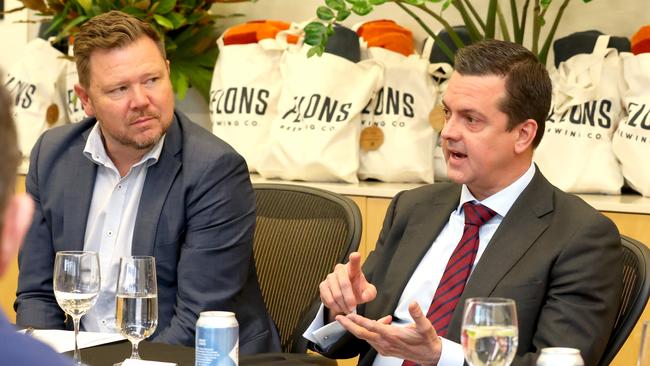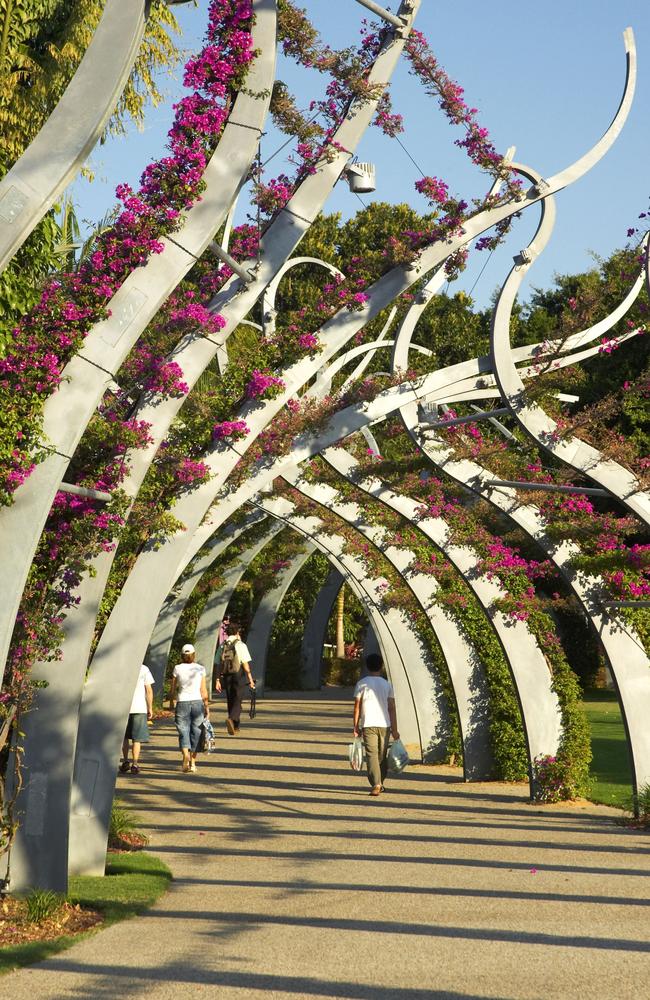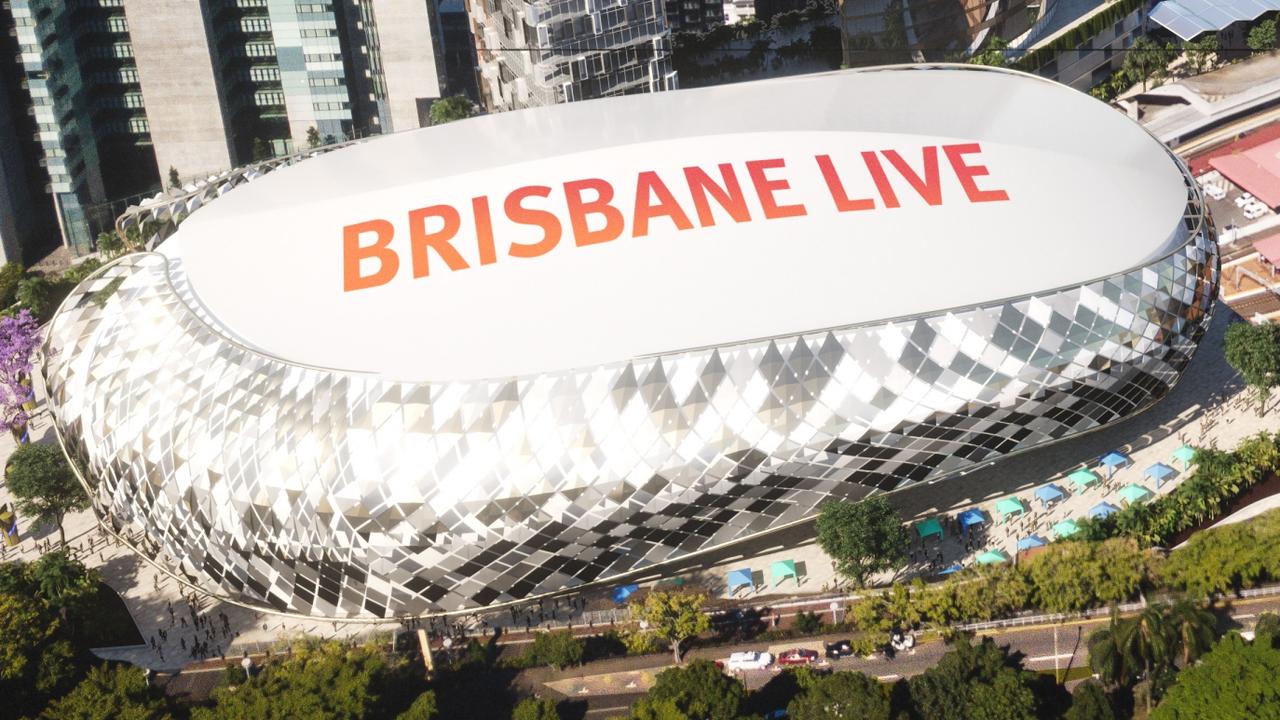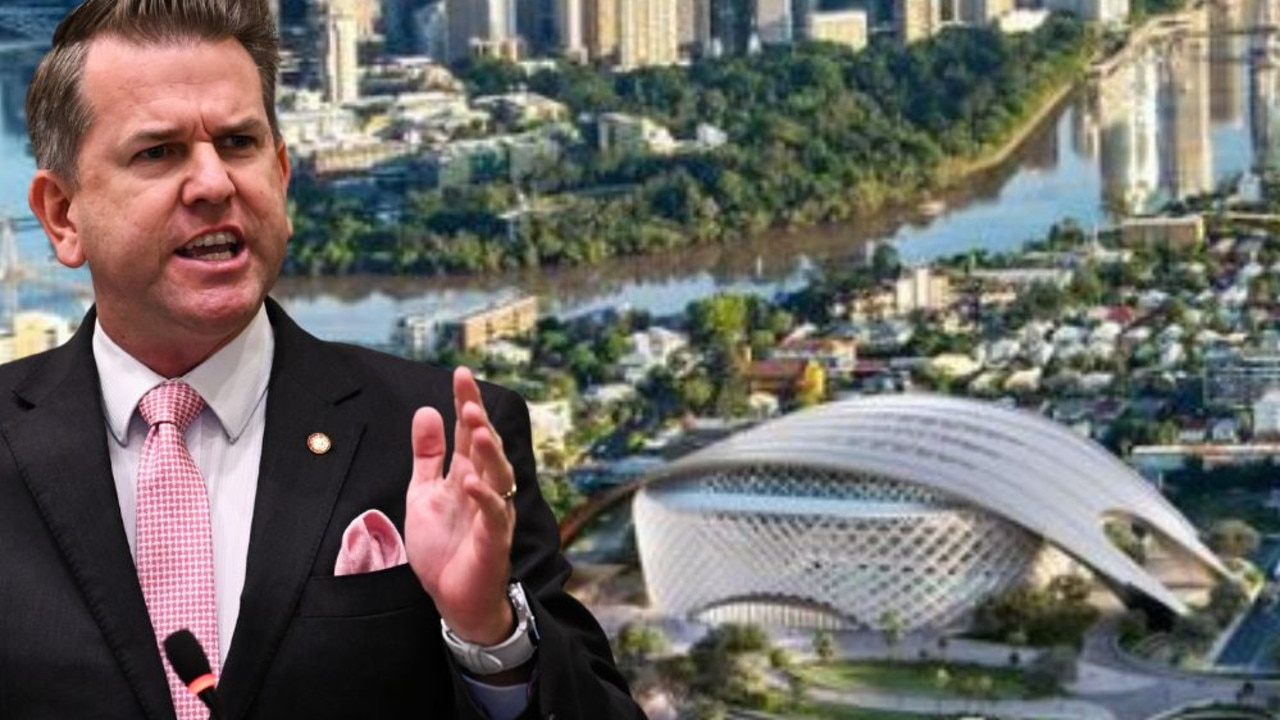South East Qld transport ‘spine’ key to state’s future success
Unlocking the “spine of the southeast” will enshrine Queensland’s liveability into the future, according to industry experts.
Future QLD
Don't miss out on the headlines from Future QLD. Followed categories will be added to My News.
Queensland’s transport and mobility future rests on unlocking the “spine of the southeast”, with industry leaders saying connectivity between the state’s major highways, new rail and the Brisbane airport is crucial to enshrine the state’s liveability.
A collection of the state’s most influential business, transport and hospitality leaders – hosted by The Courier-Mail’s Future Brisbane series – have called for all levels of government to come together and commit to long-term infrastructure planning for the benefit of the state.
RACQ head of public policy Dr Michael Kane said addressing a potential future bottleneck at Brisbane Airport – currently without a viable public transport option – was a crucial part of keeping Queensland running.
“The Bruce Highway and the M1 are the spine which hold up Queensland, and it runs right along next to the airport,” he said.
“Anything which interferes with the Bruce and the M1, impacts on Queensland. The airport is obviously vital to southeast Queensland, but it’s a nerve sitting on the spine.
“We need to get to work on the airport’s transport – because this isn’t just a story about the airport. Fixing those key highway and rail connections between the Gold Coast, Sunshine Coast and Brisbane are vital.”
With a further 10,000 workers expected to work on site at the airport by 2032 – on top of the 24,000 people who already do – Brisbane Airport Corporation’s Rachel Crowley said if nothing was to change, “we were going to be in trouble within the next 10 to 12 years”.
“Right now, every single one of (the workers) has to drive to the airport, because we don’t have a viable public transport option,” she said.
“We love Olympic and Paralympic sport – but that’s not why we were backing the Games.
“We were backing it because we could see over the horizon that the population growth in southeast Queensland was going to be driving an enormous amount of growth in aviation.
“We don’t want to be a bottleneck that causes problems for the rest of the city and the region. But we’re also really concerned about the whole north, south, east, west, horizontal and vertical connectivity.”

Ms Crowley said “mass transit” was the only way of safeguarding the region from becoming a congestion nightmare in the next decade.
“We need public transport options which bring people seamlessly down from the Sunshine Coast, to the Gold Coast, to northern New South Wales and across to the West,” she said.
“We can look after the air, we’ll invest all our money on our site to do that, but we can’t do all the other stuff. We need all levels of government to understand that the Olympics is a great way to get stuff done.”
A departure from election-cycle driven short-term thinking was also needed, the leaders agreed, in order to ensure the state does not fall behind.
Urbis founder and University of Queensland School of Architecture’s Peter Hyland reflected on his recent time living in Singapore – a one-level of government country which has a 50-year infrastructure plan, which is reviewed every ten years.
“One lesson to learn from Singapore is, do long-term planning for infrastructure and land use, and align them,” he said.

“What we can learn here in Australia is, perhaps we need to be locking away some of our infrastructure planning, and taking some of the politics out of it.
“That might not be possible in a pure sense, but we need to be making some 20 to 30-year commitments on our road and on our rail plans, get alignment on those. Perhaps the Olympics can be a catalyst for that.”
Strategic decisions could also be implemented to open up the city for more pedestrians, cyclists, and active transport, with less cars congesting the CBD.
“You don’t want pedestrians on all streets – but you want to give pedestrians priority, and have cars pushed down the priority order,” Dr Kane said.
“One of the debates we should be having, is the difference between a road and a street. Streets should not be dominated by cars.
“Brisbane has this fundamental problem in the way it was designed around the motorway.
“The CBD is the centre of Queensland’s economy, it’s the key jewel in the crown, but we run roads through it that aren’t used to go into the city, but from one side to the other.
“The inner part of the CBD is too important to be used as a freeway.”

Supporting projects which beautify the city was also key, such as the idea to extend the South Bank’s bougainvillea-lined Grand Arbour into a 5km iconic structure, extending to the Gabba in one direction and wrapping back to the new South Bank 2.0.
Howard Smith Wharves’ founder and director Adam Flaskas labelled the visionary proposal as a “brilliant idea”.
“I think it would be a beautiful thing for the city,” he said.
“Things like that are important infrastructure, apart from just ease of connectivity and assisting with easing congestion, but also because people love living in a city with those sorts of things.
“And when people become proud of their city, and really love living there – that’s important. That’s the way I feel people who live in Brisbane are feeling now.”


